I don’t do anything like enough podcast episodes about bats, given that after rodents they’re by far the most diverse type of mammal, species-wise. (I also don’t do anything like enough episodes about rodents, but that’s a guilt trip for another day).
So, a bat post. And since we’re doing photos it only makes sense to talk about a highly photogenic bat. It’s quite famous, so you may have seen it before, but it’s one of those animals you can never have too much of. Time to turn the floofy cuteness dial up to 11.
You’re in a forest in Central America - Honduras, maybe Nicaragua, Costa Rica, Panama, round there - and you notice something a bit odd about a big leaf. Almost certainly it’s a Heliconia leaf, on a plant like this:
But the particular leaf you notice is … sagging. Its drooping down on either side of the main rib running its length because the lateral veins perpendicular to that rib have been cut:
Odd. So you look underneath, inside this folded down leaf, and lo! You have found something adorable:
The Honduran White Bat, Ectophylla alba
Photo : By Geoff Gallice from Gainesville, FL, USA - Honduran tent bat, CC BY 2.0
Also known as the Tent-Making Bat, because of its habit of modifying the leaves of Heliconia in this way to make shelters for itself, in which it roosts.
Up to a dozen or more bats can be roosting in a single ‘tent’:
You’d have to have a heart of stone not to respond ‘Aw, cute’:
Photo: Melissa McMasters, via iNaturalist, CC BY 4.0
It takes these bats - several of them - quite a while to make a tent to their satisfaction. They choose leaves that are surprisingly low to the ground - seldom above human head height - and they generally have several ‘tents’ on the go in a given area at the same time, which they can rotate between for roosting purposes.
Photo: Daniel S. Katz, via iNaturalist, CC BY 4.0
By working their way along the mid-rib of the leaf and cutting its lateral connections to make it fold down they do actually pretty much kill the leaf, so these are temporary shelters. They’ll use a tent for a few weeks before it’s beyond the point of being useful, and they have to start on a new one.
Photo: Kristy Morley, via iNaturalist, CC BY 4.0
Balls of white fluff with yellow noses and ears, making tents to snuggle up in. No bat is working harder to convince you of their cuteness.

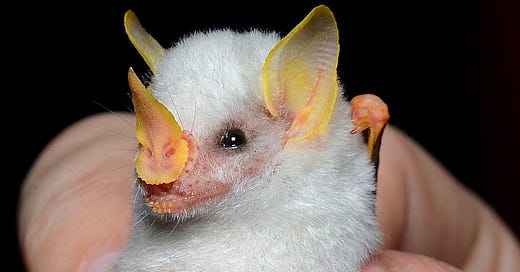


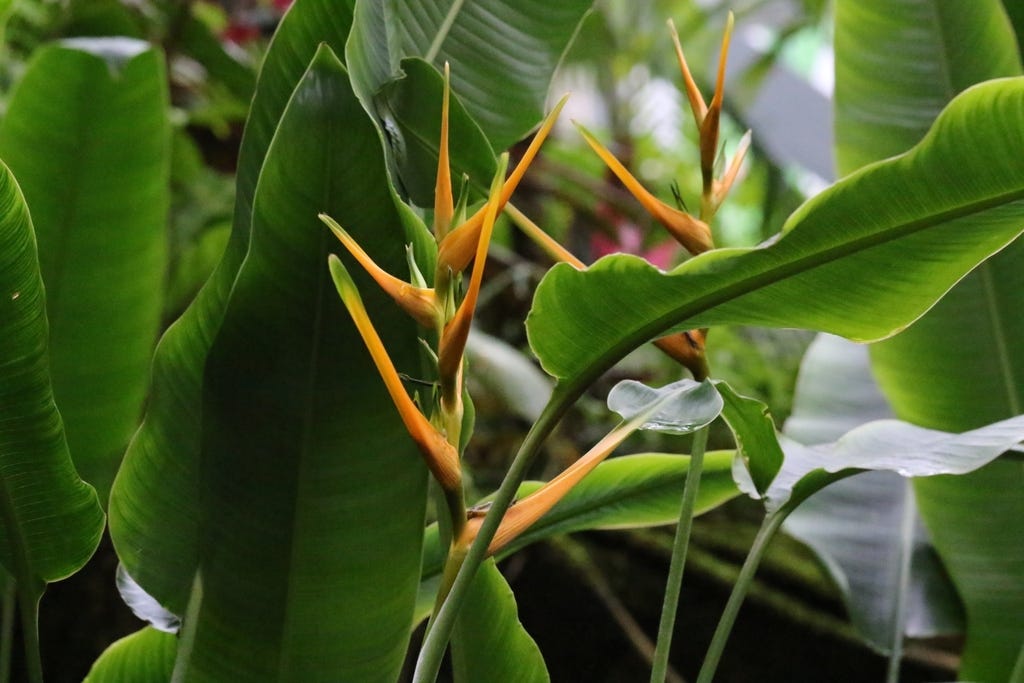
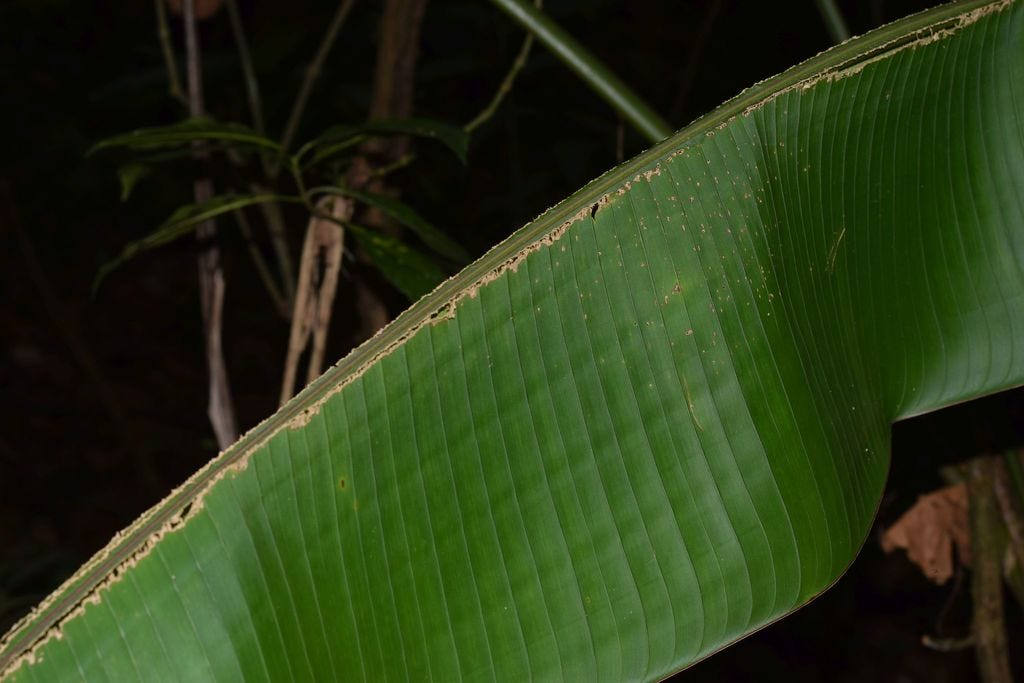



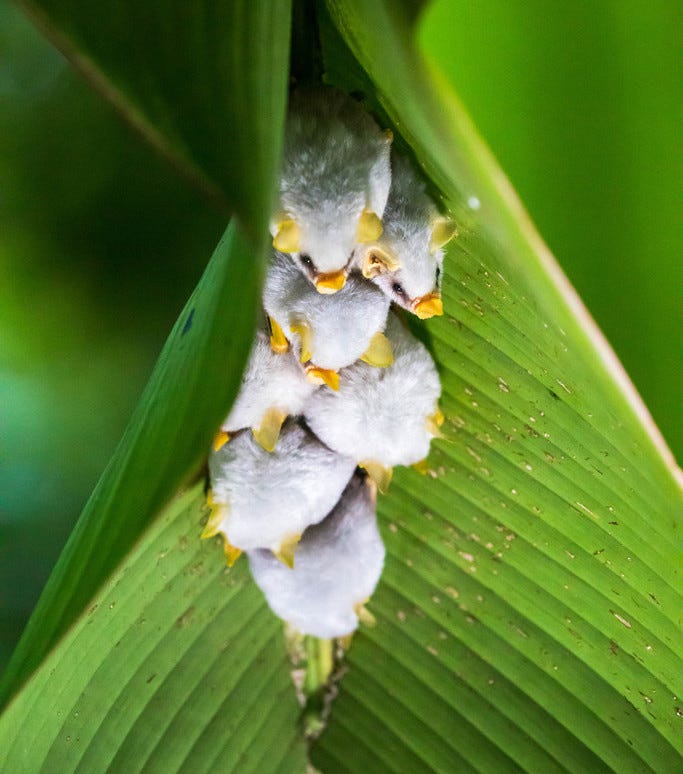
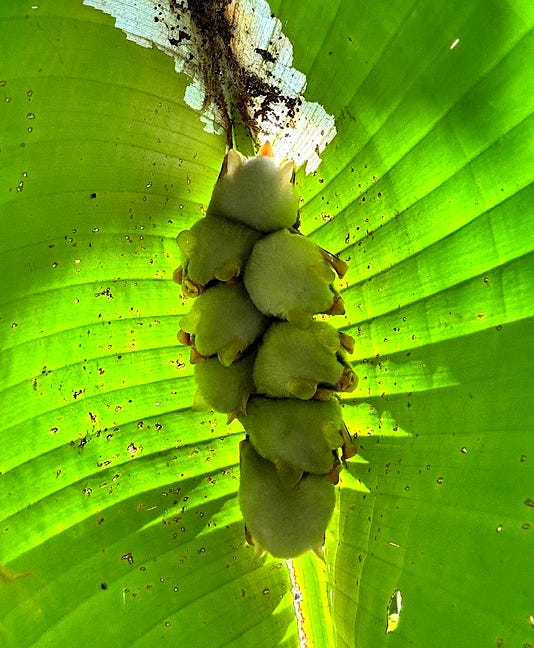

An interesting species, with a cool behavior. We can't fault them for harming plants to make homes, lest we prove ourselves hypocritical. I didn't know that bats could make suitable shelters out of leaves, or had forgotten it if I'd ever learned it. Thanks for sharing.